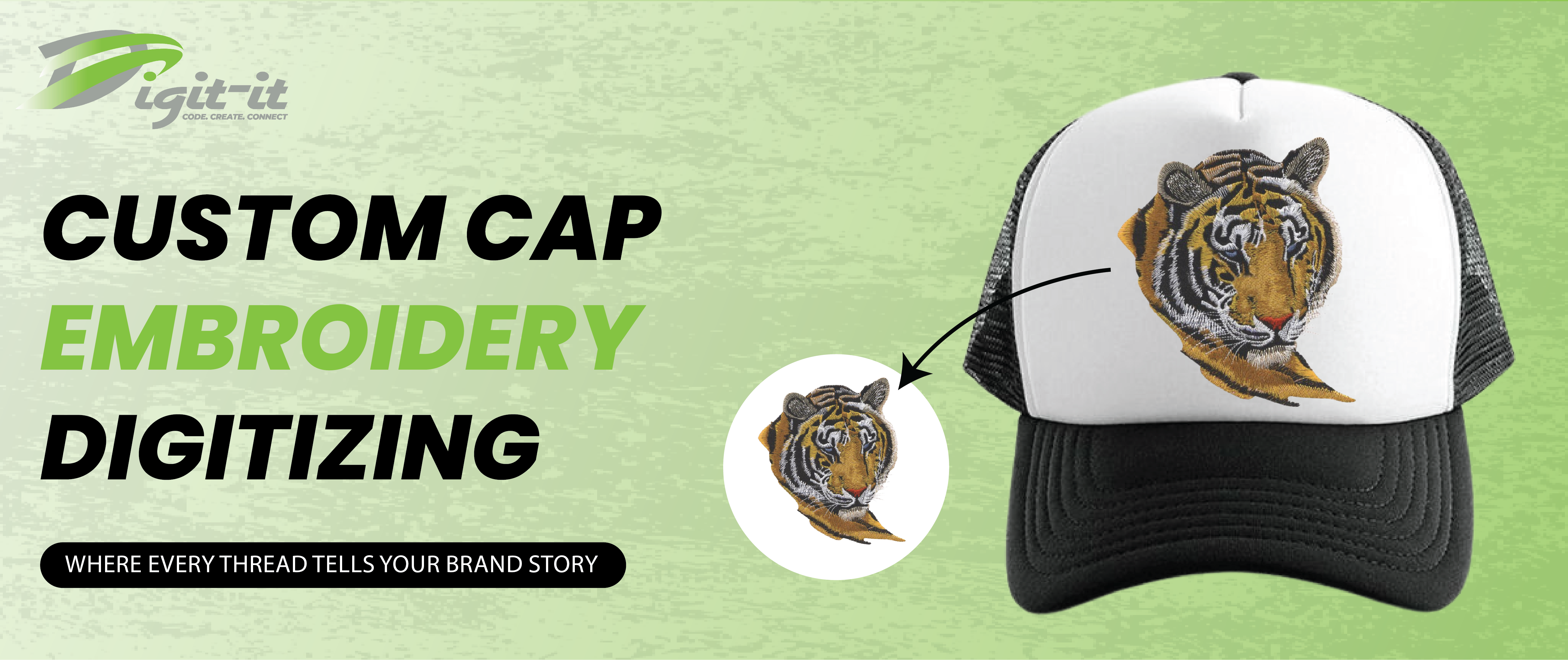Transforming Designs into Threaded Art: The Power of Embroidery Digitizing

What Is Embroidery Digitizing?
Embroidery digitizing is the process of converting artwork or logos into digital embroidery files that machines can read. These files guide the stitching path, direction, and color sequences—ensuring perfect threadwork. Whether for fashion brands, uniforms, or embroidery caps, digitizing plays a vital role in achieving clean, consistent, and professional results across all fabric types.
The Role of Technology in Modern Embroidery
Advancements in technology have revolutionized how embroidery designs come to life. Today’s digitizing software allows for high-definition designs, multiple stitch types, and color variations with incredible accuracy. Modern tools make it easier to replicate even the most intricate details—something manual stitching could never achieve.
-
High-precision software ensures smooth lines.
-
Complex logos are recreated flawlessly.
-
Color mapping brings depth and realism.
This synergy of creativity and technology has redefined embroidery as both an art and a science.
How the Digitizing Process Works
The embroidery digitizing process begins with a design or logo. Skilled digitizers then analyze the artwork, choosing the best stitch types and directions. Every color, texture, and layer is mapped to suit different fabrics. Once digitized, the file is tested to ensure accuracy and visual appeal.
-
Step 1: Import artwork into digitizing software.
-
Step 2: Assign stitches, directions, and underlay.
-
Step 3: Adjust for thread tension and fabric stretch.
-
Step 4: Run a sample embroidery for quality assurance.
Each step ensures the final embroidery design mirrors the original vision, ready for production.
Benefits of Embroidery Digitizing for Businesses
Businesses increasingly rely on embroidery digitizing to promote their brand identity. From custom uniforms to promotional merchandise, digitized embroidery delivers sharp, durable results. This approach offers both aesthetic and practical benefits.
-
Enhances brand visibility through professional detailing.
-
Ensures consistency across multiple garments or items.
-
Increases durability and wear resistance of stitched designs.
-
Reduces production time and errors.
Digitizing helps brands achieve visual consistency while reducing manual labor, saving both time and money.
Why Quality Digitizing Matters
Quality digitizing determines how good an embroidered design looks after stitching. Poor digitizing can cause uneven stitching, color mismatches, or fabric damage. Expert digitizers focus on thread density, stitch type, and pathing to guarantee smooth finishes.
For example, a logo with fine lettering needs satin stitches for clarity, while a textured design may require fill stitches. Good digitizing means the difference between a crisp, professional result and a distorted one.
Embroidery in the Fashion and Promotional Industry
Fashion designers and businesses alike rely on embroidery to create eye-catching apparel. From monogrammed shirts to branded outerwear, embroidery digitizing makes customization simple. The same applies to accessories like hats, jackets, and tote bags.
In the promotional sector, digitized embroidery gives companies a way to showcase their brand on quality materials—making lasting impressions at events, trade shows, and corporate gatherings.
-
Adds texture and dimension to designs.
-
Elevates brand recognition.
-
Offers premium appeal over printed graphics.
Common Stitch Types Used in Embroidery
Different stitches serve unique purposes in the embroidery process. Understanding them helps you appreciate the precision that embroidery digitizing brings to every project.
-
Satin Stitch: Ideal for smooth lines and letters.
-
Fill Stitch: Perfect for larger, filled areas.
-
Running Stitch: Used for outlines and fine details.
-
Underlay Stitch: Provides foundation and stability.
Each stitch is strategically chosen based on the fabric, design complexity, and desired texture, ensuring a flawless outcome every time.
How to Choose a Professional Digitizing Service
Finding the right service provider can make or break your embroidery project. Look for companies with a proven track record, skilled digitizers, and quality assurance testing.
When selecting an embroidery digitizing partner:
-
Review their sample work for precision.
-
Ensure they support your file format and machine type.
-
Ask about turnaround time and revision policies.
-
Prioritize customer support and communication.
A reliable service ensures your project stays on schedule and meets your design expectations perfectly.
The Future of Embroidery Digitizing
With AI-driven tools and 3D embroidery capabilities, the future of digitizing looks brighter than ever. Automation continues to refine stitch placement and reduce design time. Soon, artists will combine augmented reality and embroidery technology to preview stitches before production—enhancing creativity and efficiency.
As fashion and branding evolve, embroidery digitizing will remain a cornerstone of personalization and craftsmanship in the digital era.
Conclusion
In today’s competitive market, embroidery design quality defines brand value and craftsmanship. Embroidery digitizing bridges the gap between imagination and precision, allowing any design to come alive in thread form. From embroidery caps to corporate uniforms, this art form unites creativity with technology, ensuring timeless, high-quality results for every project.
Ready to get started? Get a Free Quote Now or Contact Us today to turn your ideas into stunning embroidered art.
Author: Digit-it
Experts in Custom Embroidery Digitizing – Trusted by Clients Nationwide
Email: digitize@digit-it.com
Website: https://www.digit-it.com/
Contact: 1 (231)-821-5515
Secure, Professional, and Committed to Quality – View our About Page and Contact Information for Trust & Support.
- Art
- Causes
- Crafts
- Dance
- Drinks
- Film
- Fitness
- Food
- Spellen
- Gardening
- Health
- Home
- Literature
- Music
- Networking
- Other
- Party
- Religion
- Shopping
- Sports
- Theater
- Wellness


